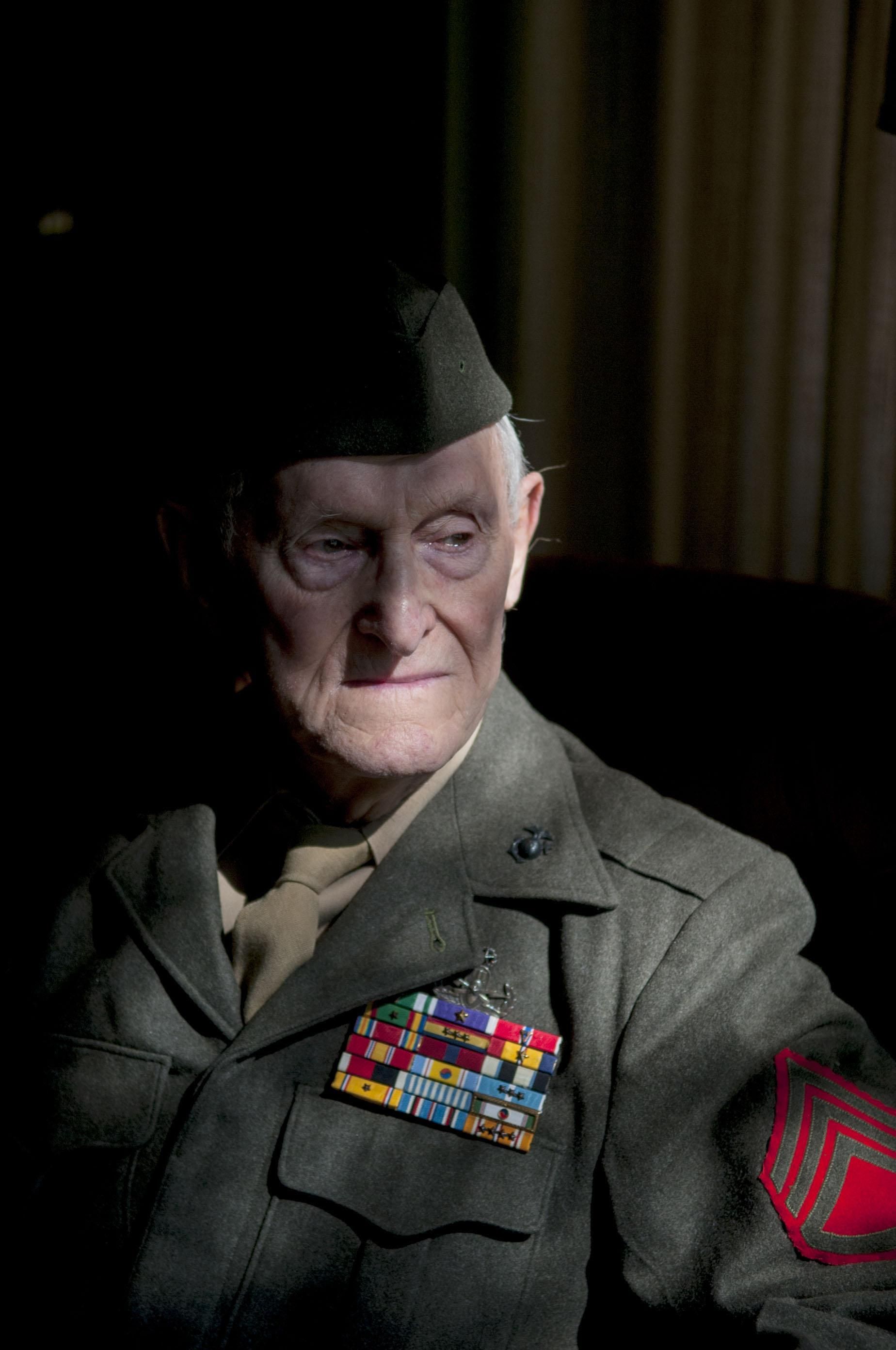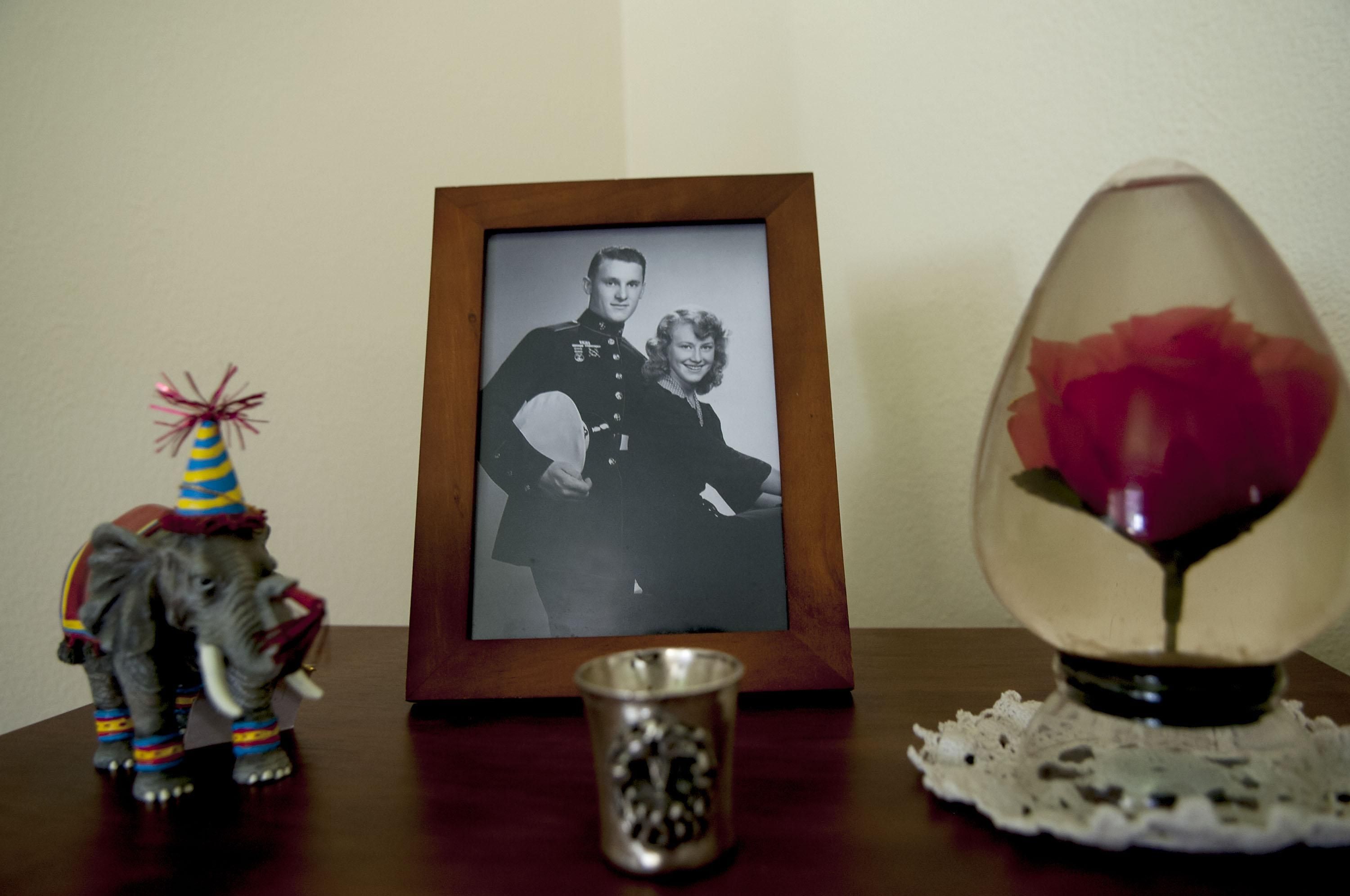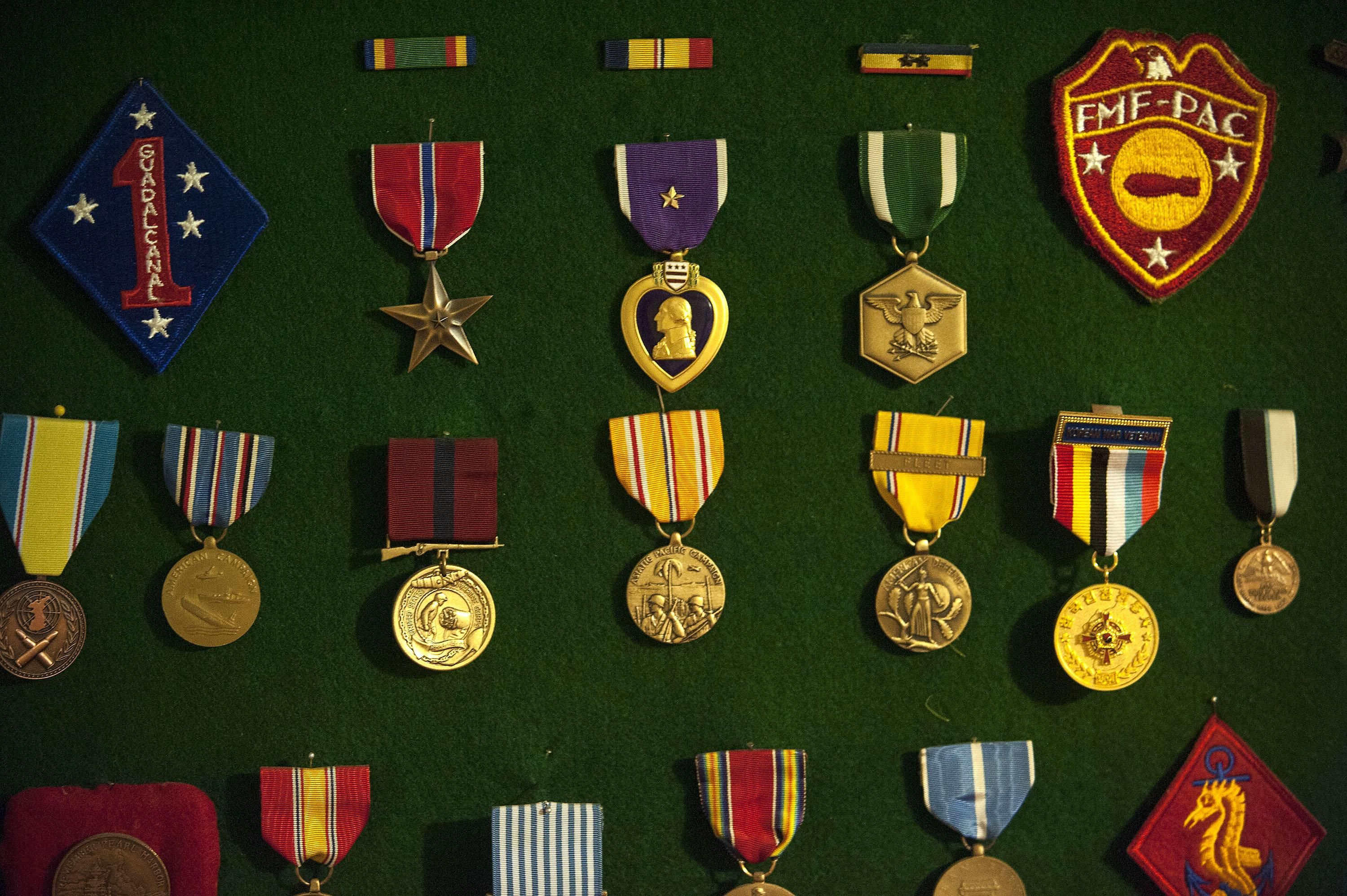
And then there was one: Ray Garland is last of local Pearl Harbor survivors’ group
Just before 8 a.m. on Dec. 7, 1941, a weary Ray Garland joined a small group of sailors and Marines on the quarterdeck of the USS Tennessee. He’d been on watch since 4 a.m. but got off early to help raise the colors.
“I heard a noise,” he recalled. “A corporal said, ‘Turn around,’ so I did. I saw a Japanese dive bomber flying alongside us. He was so close, I could see his goggles.”
The flag wasn’t raised that day.
Garland, 94, is the last living military veteran on the membership roster of the Lilac City Chapter of Pearl Harbor Survivors. At one time the chapter had 125 active members from all over the Inland Empire.

“It’s kind of a lonely feeling,” he said when he attended chapter member Charles Boyer’s funeral in April.
A native of Butte, Montana, Garland lied about his age so he could join the Civilian Conservation Corps in 1938.
“I was 16. You were supposed to be 17,” he said.
He fought forest fires and planted trees for a couple years, and then eyed the military.
“I got to looking at a Life magazine,” Garland said. “I’d never seen a Marine before, but I liked their dress blue uniforms, so I signed up. They were gonna get me anyway, so I thought I might as well join.”
He was soon shipped to Pearl Harbor and assigned to the Tennessee – the youngest man in the Marine detachment aboard the battleship. He turned 19 on Nov. 27, 10 days before Japan’s surprise raid on the fleet.
“I was a powder monkey,” he said, describing his duties in helping man the ship’s 5-inch batteries and 50-caliber machine guns.
Garland, never garrulous, is matter of fact about his experience during the attack and its aftermath. With short, clipped sentences, he narrates the hell he found himself in on Dec. 7, 1941.
As the dive bomber flew past him, Garland looked out and saw a swarm of planes bombing Ford Island. He was scrambling to his duty station when he saw the USS Arizona, moored just 75 feet away, take several hits. A huge explosion followed as a bomb penetrated ammunition magazines. The noise was horrific.
“My ears still ring,” Garland said.
Burning oil and debris from the Arizona quickly ignited fires on the Tennessee. From his vantage point he saw the USS Oklahoma listing badly.
He shrugged. “I watched it turn over,” he said.

For more photos and videos go to: Remembering Pearl Harbor
Time seemed to stand still as he doggedly cleared the deck of corpses and body parts. As flames sparked and ignited across the ship, Garland was pressed into firefighting duty. By that time the second wave of the attack had begun.
He and a sailor opened the hatch to get to the officer’s quarters and saw flames along the bulkhead. He pointed a hose at the fire and saw a bright flash.
That was the last thing he saw for quite awhile. Later he learned the insulation had been burned off the main power lines. As he sprayed water an electrical charge shot up through the hose, scorching his face and eyes.
“You can light a city with the charge that goes through those lines,” Garland said. “The current traveled through the water and got me. The last thing I remembered was turning the hose on.”
He awoke in sick bay.
“I couldn’t see too well, at least not enough to shoot at anything, but I didn’t want to leave the ship.”
After three days in sick bay, he resumed his duties. “There were a lot of people in worse shape than me,” he said.
Over the next two years, Garland stayed aboard the Tennessee and participated in the Aleutian, Marshall and Gilbert Islands campaigns.
Discharged in late 1945, he returned to Butte to work in the copper mines like his father and grandfather before him. But after being aboard ship for several years, life below ground didn’t suit him.
He married, moved to Spokane in 1948 and fathered two boys.

“I signed up for the Marine Reserves because I’d bought a house for $7,000 and the pay would cover my $45 per month house payment,” Garland said.
In 1950 he was recalled to active duty when the Korean War broke out. He spent 10 months in Korea with the 1st Marine Division. While he was one of the youngest at Pearl Harbor, when he landed at Inchon, he was one of the oldest.
“They called me, Dad,” he said. He was 27 and about to enter a new kind of hell.
“It was tough,” Garland said. “Pearl Harbor was bad, but coming into the Chosin Reservoir….”
He shook his head. “Korea was a forgotten war. We didn’t know if we would make it. I had frostbite on both hands and my feet.”
To this day his hands ache from the nerve damage he suffered there.
Under constant barrage of artillery fire, his unit slogged on. During one firefight, a bullet ricocheted and struck Garland in the leg.
“I jumped in a hole, but there was a dead soldier in it,” he recalled. “I was out of that hole so fast!”
That bullet stayed lodged in his leg for 40 years.
He often says, “The Japanese singed me on December 7 and the Chinese shot me on December 5.”
Garland was just thankful to return to Spokane, his family and the carpet business he’d started before he left. He fathered a daughter, and when his first marriage failed, he moved to Coeur d’Alene and wed Beverly Plumb in 1976, becoming a father to her two sons.
A shadow box in his home tells the story that slowly, over time, he has filled in with words. Like many World War II veterans, it took him decades to talk about his experiences. Among other military decorations, the box contains two Purple Hearts and a Bronze Star.
He shrugged. “I never told my kids, or talked about it.”

Garland has attended two Pearl Harbor reunions and considered going again this year, but he’s recovering from a shoulder injury, and an eight-day visit to Hawaii seemed like too much.
When asked to reflect on his time of service, he sighed and looked down at his hands. “I got scorched a little. I got nicked a little. But so many people were hurt far worse than me.”
Then he lifted his head and straightened his back, his military posture still erect, still tall.
“I think I was a good Marine,” he said.
For more on this story
Visit Remembering Pearl Harbor
